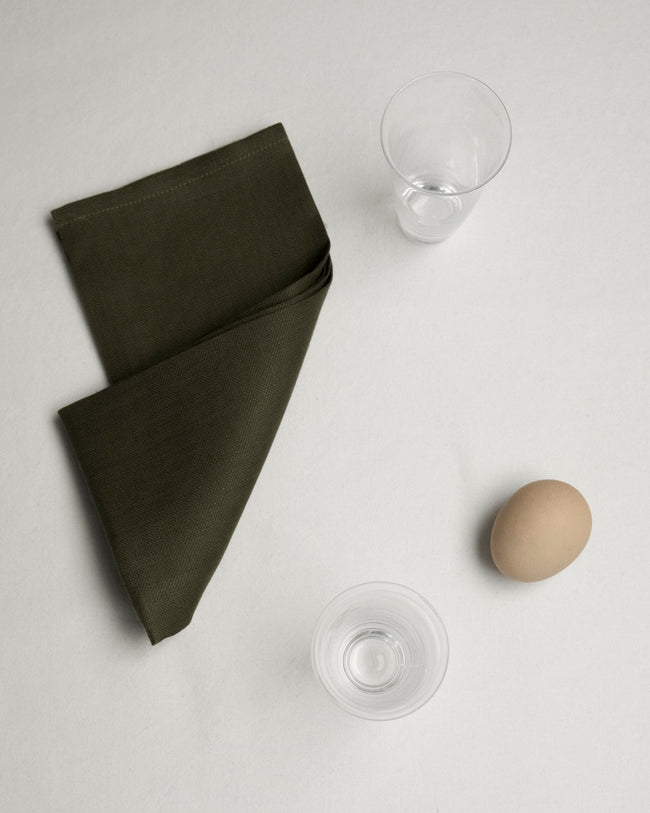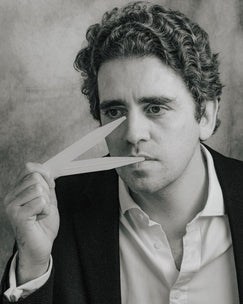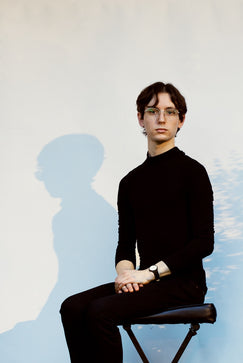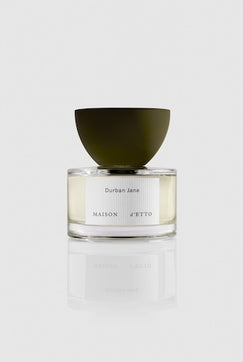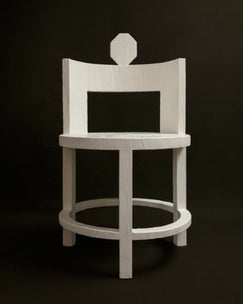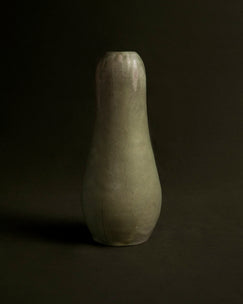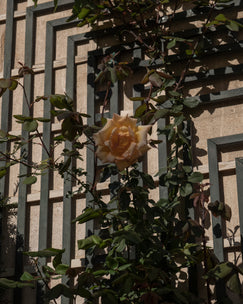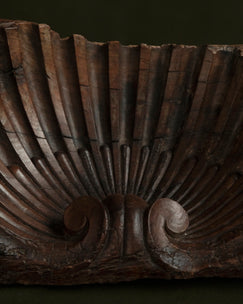M. d’E. What fragrance did you create for MAISON d’ETTO?
Macanudo which is fresh, crisp and bold. A modern vetiver composed of hay absolute, cut grass and freshly turned earth from galloping hooves, threaded with a bright neroli top.
M. d’E.What moves you about scent?
Ever since I can remember, I have always loved scent and felt deeply connected to it. The smell of the earth after rain, picking blackberries in the forest, firewood burning in the winter, the bottle of Shalimar on my mother’s vanity.
M. d’E.When did you realize you wanted to be a perfumer?
I didn’t realize that a perfumer was even a job title until I was eighteen years old. At that time, in America (even in New York, where I grew up) there was not a lot of public awareness about this industry. Nevertheless, I was always very creative, and thought I would pursue a career in music, film, or art. That is, until the day I discovered there were artists whose jobs it were to create these beautiful scents I loved so much; who had the power to bottle memories and write vivid stories through olfactive landscapes. After that, to become a perfumer was my only goal.
M. d’E.What was your path to becoming a perfumer?
I never had a straight path into perfumery – I didn’t study chemistry, or attend ISIPCA like so many of my colleagues. I was drawn to scent from a different angle, and instead used my college years to focus on the anthropology of scent and how it shaped the cultures, religions, and language development of various African tribes. I loved the stories of ancient Egypt, of incense, the spice routes, and the idea that the passing of time could be marked and measured by the scents of the seasons. I studied the scents I discovered in nature, food, travel, and the olfactive memories of past experiences, much more than I obsessed over the history of traditional perfumery. My love of culture, botany, and anthropology shaped that focus for me and continues to influence my creative process.
M. d’E. We appreciate that so much, as you know my path was also very winding. How did you discover IFF?
An unorthodox approach and a lot of conviction eventually landed me a job as an assistant to the Creative Director of IFF New York in 2010. At that point I had applied for over 100 positions in the fragrance world, but never the thought of giving up.
M. d’E. SAME!
Once I was at IFF, I worked on the sensory team, and then in fragrance development, before landing a coveted spot at the IFF perfumery school. I trained for years in New York, Singapore, France and The Netherlands before returning to New York as a Junior Perfumer.
M. d’E. We call you the rebel, bad-ass perfumer at MAISON d’ETTO. I was quite intimidated by you when we first met. To the point where I said, I don’t know if this is going to work. Then I learned like me, you could be introverted and slow to open up. It wasn’t until I was invited to an internal IFF storytelling session where I was able to fully see you, your heart, your spirt and the love for what you do. I still remember every time I heard your story I would just begin crying uncontrollably. Everyone was like, who is this crazy client and why does she keep crying when people tell Mackenzie’s story. Well it was because at that moment, I saw all of me in you. Every single aspect of my windy career and the risks I took. Share with everyone your story.
What!! I didn't know this story! I definitely took a lot of risks and had an indirect path to reach where I am today. I don't know if I would call myself a rebel, but I do tend to have trouble staying inside the box! Just as I was beginning my career as a perfumer in NYC, I strayed off the traditional path, and requested to move to Grasse, the birthplace of perfumery in the south of France, to work at our naturals facilities at LMR (Laboratoire Monique Remy). I had created a thesis and a project around the research of flowers and the fluctuation in their olfactive emissions throughout the day, night, and growing season, as influenced by pollinators and environmental conditions.
I spent one year there, not competing on commercial projects — a move considered by some to be risky for a first-year perfumer, but doing research instead. Studying these natural plants very closely, hand-making my own absolutes, and spending my days in the field and the lab reviewing GC-MS analysis provided the experience and knowledge that would become the foundation of my identity as a perfumer and lover of naturals. This work has greatly influenced my use of botanicals, my understanding of their nuances, and my love of their complexities and mystery. Sometimes I’ll go very early in the morning to the Union Square Farmer’s Market in NYC, and once in a while you will see some very famous chefs walking around inconspicuously, sniffing tomatoes or tasting radishes for their bite. I think of my time in the fields as the perfumery equivalent of that; recognizing the immense value of knowing your ingredients intimately and at the source.
M. d’E. What did your path look like when you returned from France?
I started working again on commercial briefs in 2018, and have since been lucky to work with incredible brands, from the large prestige fragrance companies, to niche brands like Maison d’Etto, Masque Milano, Caswell Massey and International brands in Asia, South America and the Middle East. I love the mixture of the fast-paced, competitive nature of the large projects, and the nuanced, intimate and highly-creative nature of the more avant-garde niche projects. Each new brief is a new universe to discover, and I always find myself learning new things and am endlessly inspired by my clients’ visions. Whether exploring the equestrian world with Maison d’Etto, or traveling to Yellowstone National Park with Caswell Massey to capture the scents of endangered flowers (without touching or harming them), there is always an incredible adventure on the horizon.
M. d’E. What is your process? How do you create?
I’m a very visual person and tend to think about fragrance in architectural terms. When I approach the creation of a fragrance structure, I conceptualize in terms of the space it occupies in the air. Not necessarily sillage, but more of a 3-D depiction which involves texture and sometimes color as well. I always do my first sketches by hand, never on the computer. Working with a pen as opposed to a keyboard feels much more intuitive to me, and my thoughts definitely flow better that way. I draw the formula like this, with ingredients scattered where I see them in space, sized proportionally, quantities noted. Then I put this into digital formula software so we can prepare the trial for me to smell. From here I tend to work more on the computer as I develop and fine-tune. I do always go back to the page, however, when a big directional change is needed, or if I feel stuck.
Another way I work is in sort of a two-phased approach. In the beginning of a project, I think it’s super important to have a strong, clear vision, and a ton of conviction about where you see the fragrance going. It’s very hard to work without this clear vision, and if this is missing, the development tends to idle, and the process can feel aimless, which is very uncomfortable. Once I have a strong vision in my mind, I work until a certain point, where the fragrance develops a personality or identity of its own. The second phase happens now, where instead of ‘telling’ the fragrance what to do, I start to ‘listen’ to the fragrance, very introspectively, and it will start to tell me what it needs. It’s almost like the composition gets a mind of its own, and you have to trust it. Sometimes it surprises you!
